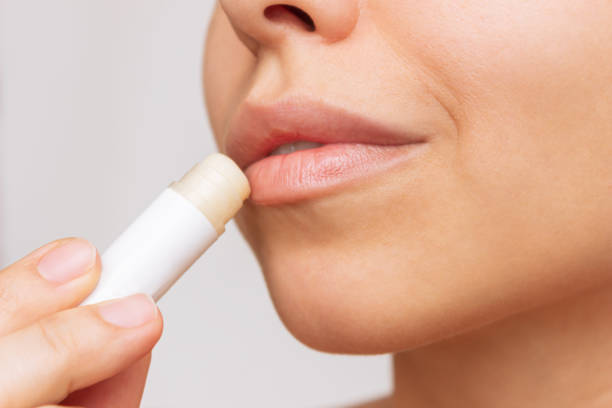Kissing is a universal form of affection that transcends cultures and languages, playing a crucial role in human relationships. This article explores the nuances of how to kiss without using tongues, providing a gentle approach that is suitable for beginners or those who prefer a softer, more subtle expression of affection.
Understanding the Basics of Kissing Without Tongues
Kissing without tongues involves a variety of lip movements and gentle pressure that can convey warmth and affection just as effectively as more intense forms of kissing. Here’s what you need to know:
Lip Contact
Lip contact lies at the heart of kissing without tongues. This form of kissing revolves around the tender meeting of lips, focusing on the sensation of closeness and connection it brings. Key points regarding lip contact include:
- Gentle presses and brushes characterize lip contact in closed-mouth kissing.
- Unlike French kissing, there’s no involvement of tongues, making it a softer, more subtle form of intimacy.
- The emphasis is on the delicacy of the touch, creating a sense of warmth and affection between partners.
Pressure
The application of gentle pressure is crucial in mastering the art of kissing without tongues. This involves finding a balance that feels comfortable and enjoyable for both partners. Here are some aspects to consider regarding pressure:
- Gentle pressure enhances the sensation of intimacy without overwhelming the recipient.
- It’s essential to communicate with your partner to ensure mutual comfort and enjoyment.
- Pressure can vary depending on the mood and context of the kiss, ranging from light and teasing to slightly firmer and more lingering.
Duration
Closed-mouth kisses are typically brief yet meaningful exchanges of affection. They’re characterized by their sweet and concise nature, leaving a lasting impression on both partners. Consider the following points regarding the duration of kisses without tongues:
- These kisses tend to be shorter compared to more passionate forms of kissing.
- Despite their brevity, they can evoke powerful feelings of closeness and emotional connection.
- Shorter kisses allow for moments of intimacy to be shared throughout the day, fostering a sense of romance and affection in the relationship.
Key Techniques
Mastering specific techniques can enhance the experience of kissing without tongues, adding depth and intimacy to the exchange. Here are some key techniques to explore:
| Kiss Type | Description |
| Peck | A quick, soft touch of the lips, often used as a friendly or affectionate gesture. |
| Butterfly Kiss | Delicate kisses where partners’ eyelashes touch as they draw close, creating a whimsical and intimate sensation. |
| Single-Lip Kiss | Focusing on kissing either the lower or upper lip of your partner, reciprocated in kind, allowing for focused attention and heightened connection. |
The Benefits of Kissing Without Tongues
Kissing without tongues isn’t just a stepping stone for beginners; it holds its own charm and benefits:
Comfort
For individuals who are shy or uncomfortable with more invasive forms of kissing, closed-mouth kissing provides a sense of comfort and reassurance. The absence of tongue involvement makes it less daunting for beginners or those who prefer a gentler approach to physical intimacy. Key points regarding comfort include:
- Closed-mouth kissing offers a gradual entry point for individuals exploring physical affection with a partner.
- It allows individuals to establish boundaries and explore intimacy at their own pace.
- The simplicity of closed-mouth kissing can alleviate anxiety and promote relaxation during intimate moments.
Hygiene
One of the practical advantages of kissing without tongues is its potential for improved hygiene. With less exchange of saliva compared to French kissing, there is a reduced risk of transmitting minor infections or illnesses. Here are some key considerations regarding hygiene:
- Limited saliva exchange minimizes the spread of germs and reduces the likelihood of passing on colds or other minor infections.
- Individuals with concerns about oral hygiene may find closed-mouth kissing more appealing due to its lower risk of transmitting bacteria.
- While proper oral hygiene remains important regardless of kissing style, closed-mouth kissing offers an added layer of protection against potential health risks.
Intimacy
Despite its simplicity, kissing without tongues can be a profoundly intimate and personal act. It fosters emotional connection and strengthens bonds between partners in meaningful ways. Consider the following aspects of intimacy associated with closed-mouth kissing:
- The focused attention on lip contact promotes closeness and enhances emotional connection between partners.
- Closed-mouth kisses create moments of shared intimacy that deepen the sense of connection and affection in a relationship.
- This form of kissing allows partners to express love and tenderness without the need for more overt displays of physical affection.
Why It’s Popular
Closed-mouth kissing enjoys popularity for several reasons, making it a preferred choice for many individuals and couples. Here’s why it’s commonly embraced:
| Advantage | Description |
| Simplicity | Closed-mouth kissing is easy to master and less intimidating for individuals new to physical intimacy or exploring relationships. |
| Versatility | Its discreet nature makes closed-mouth kissing suitable for public places where more modest displays of affection are appropriate. |
Preparing for the Kiss

Proper preparation can make the experience more enjoyable and comfortable for both partners. Here’s how to prepare for a kiss:
Hygiene
Maintaining excellent oral hygiene is essential for a pleasant kissing experience. Here are some steps to ensure freshness:
- Brushing: Start by thoroughly brushing your teeth to remove any food particles and plaque. Pay special attention to your tongue and the roof of your mouth, as these areas can harbor bacteria that cause bad breath.
- Flossing: Flossing helps remove debris and bacteria from between your teeth, contributing to fresher breath and a cleaner mouth.
- Mouthwash: Rinse with mouthwash to kill bacteria and freshen your breath. Choose a mouthwash with a mild, pleasant flavor that won’t overpower the moment.
In addition to these steps, consider keeping breath fresheners like mints or breath spray on hand for a quick touch-up right before the kiss.
Moisturized Lips
Soft, moisturized lips are more inviting and pleasurable to kiss. Follow these tips to ensure your lips are kiss-ready:
- Lip Balm: Apply a generous layer of lip balm or moisturizing lip treatment well in advance of the kiss. Look for a product with natural ingredients like shea butter or coconut oil to hydrate and protect your lips.
- Exfoliation: If your lips are dry or flaky, consider exfoliating them gently with a lip scrub. This will remove dead skin cells and reveal softer, smoother lips underneath.
- Avoid Harsh Products: Steer clear of lip products containing harsh ingredients like menthol or camphor, as these can cause irritation and discomfort.
Taking care of your lips not only makes them more kissable but also enhances the overall experience for both you and your partner.
Setting the Mood
Creating the right atmosphere is key to setting the stage for a memorable kiss. Consider the following factors when setting the mood:
- Location: Choose a private, comfortable setting where you both feel relaxed and at ease. This could be a cozy corner of your home, a secluded spot in nature, or any place where you can enjoy each other’s company without distractions.
- Ambiance: Set the mood with soft, dim lighting to create a romantic atmosphere. Candles, fairy lights, or a dimmer switch can help create a warm, intimate glow.
- Music: Play soft, soothing music in the background to enhance the mood and add an extra layer of romance. Choose songs that resonate with both of you and evoke feelings of love and connection.
Preparation Checklist
To ensure you’re fully prepared for the kiss, here’s a handy checklist of items to have on hand:
| Preparation Item | Description |
| Breath freshener | Includes mints or breath spray to freshen breath before the kiss. |
| Lip balm or moisturizing lip treatment | Essential for moisturizing lips and preventing dryness or chapping. |
| Comfortable and relaxed environment | Setting the stage with a cozy and relaxed atmosphere to enhance the kissing experience. |
Step-by-Step Guide to Kissing Without Tongues

Follow these steps to ensure a smooth, enjoyable kissing experience without tongues:
Approach Gently
Approach your partner with gentleness and sensitivity, allowing them time to respond and reciprocate. Moving in slowly demonstrates respect and consideration for their comfort levels. Key points to remember include:
- Slow Movement: Avoid rushing in for the kiss; instead, take your time to build anticipation and create a sense of intimacy.
- Non-verbal Cues: Pay attention to your partner’s body language and facial expressions to gauge their receptiveness to the kiss.
- Respect Boundaries: If your partner seems hesitant or pulls away slightly, give them space and refrain from pressing forward.
Close Your Eyes
Closing your eyes during the kiss enhances the emotional connection and prevents any potential awkwardness from staring. By focusing on the sensation of the kiss rather than visual stimuli, you can deepen the intimacy of the moment. Consider the following:
- Emotional Connection: Closing your eyes allows you to immerse yourself fully in the experience, enhancing the sense of closeness and connection between you and your partner.
- Eliminate Distractions: Shutting out external distractions by closing your eyes enables you to focus solely on the sensations of the kiss, making it more enjoyable and meaningful.
Begin With a Peck
Start the kissing session with a simple peck to gauge comfort levels and establish a foundation of intimacy. A peck serves as a gentle introduction to kissing without tongues and sets the tone for the rest of the interaction. Here’s what to keep in mind:
- Light Touch: Keep the initial peck soft and brief, focusing on the gentle meeting of lips rather than intensity or duration.
- Observe Reaction: Pay attention to your partner’s response to the peck, noting their level of comfort and interest in further intimacy.
- Communication: Use the peck as an opportunity to communicate non-verbally with your partner, conveying affection and desire in a subtle yet meaningful way.
Experiment with Pressure
Once you’ve initiated the kiss, experiment with different levels of lip pressure to discover what feels most enjoyable for both you and your partner. Adjusting the pressure allows you to tailor the experience to your preferences and enhance the sensations of intimacy. Consider the following:
- Gentle Pressure: Start with light pressure and gradually increase as you and your partner become more comfortable with each other.
- Communication: Check in with your partner periodically to ensure that the pressure feels pleasant and not too intense.
- Variety: Explore a range of pressures, from feather-light to slightly firmer, to find the perfect balance that enhances the pleasure of the kiss.
Use Your Hands
Incorporating your hands into the kissing experience can heighten the sense of intimacy and connection between you and your partner. Consider placing your hands on your partner’s shoulders, waist, or gently holding their face to enhance the sensation of closeness. Here’s how to use your hands effectively:
- Gentle Touch: Use a light, caressing touch with your hands to convey affection and desire without being overly aggressive.
- Explore Sensations: Experiment with different hand placements and movements to discover what feels most pleasurable for both you and your partner.
- Mutual Consent: Always respect your partner’s boundaries and comfort levels when using your hands during the kiss, and be responsive to their cues and signals.
Practice Makes Perfect
As with any skill, practice is key to mastering the art of kissing without tongues. Here are some additional tips to help you improve your technique:
| Practice Tip | Description |
| Rehearse Alone | Practice kissing with a pillow or your hand if feeling nervous or inexperienced to gain confidence and refine technique in private. |
| Self-Reflection | Reflect on kissing experiences to identify what feels good and what could be improved. Use feedback to adjust your approach and enhance future encounters. |
Common Challenges and How to Overcome Them
Kissing without tongues might seem simple, but it can come with its challenges:
Nervousness
Feeling nervous before a kiss is perfectly normal, especially if you’re new to physical intimacy or exploring a new relationship. Here’s how to manage nervousness and ease into the moment:
- Deep Breathing: Take several deep breaths to calm your nerves and center yourself before leaning in for the kiss. Focus on your breath to ground yourself in the present moment and alleviate feelings of anxiety.
- Go Slowly: Approach the kiss gradually, allowing yourself and your partner time to adjust and become more comfortable. Slow movements can help reduce nervousness and create a sense of ease and relaxation.
Mismatched Styles
If you and your partner have different kissing styles or preferences, it can lead to awkwardness or discomfort during intimate moments. Open communication is key to overcoming this challenge:
- Discuss Preferences: Have an open and honest conversation with your partner about your kissing preferences and what feels most enjoyable for both of you. Encourage them to share their preferences as well, fostering mutual understanding and respect.
- Compromise: Find a middle ground that accommodates both of your styles and preferences. Experiment with different techniques and approaches to kissing until you find a rhythm that feels satisfying for both partners.
Overthinking
Overthinking each movement or worrying about performance can detract from the enjoyment of the moment. Here’s how to stay present and overcome the tendency to overthink:
- Mindfulness: Practice mindfulness techniques to stay grounded in the present moment and quiet the chatter of your mind. Focus on the sensations of the kiss—such as the texture of your partner’s lips and the warmth of their breath—to stay connected and engaged.
- Let Go of Expectations: Release any expectations or judgments about how the kiss should unfold and simply allow yourself to experience it as it happens. Embrace spontaneity and go with the flow, trusting in the natural progression of the moment.
Conclusion
Knowing how to kiss without tongues is a delightful skill that enhances intimacy and comfort in a relationship. By understanding the techniques and preparing adequately, anyone can master this gentle art of kissing, creating memorable moments with their partner.
FAQ
A: Absolutely! Many people prefer it for its simplicity and intimacy.
A: Practice is key. Also, consider feedback from your partner and adjust accordingly.
A: It’s perfectly fine. Just gently return to kissing without tongues and continue.
